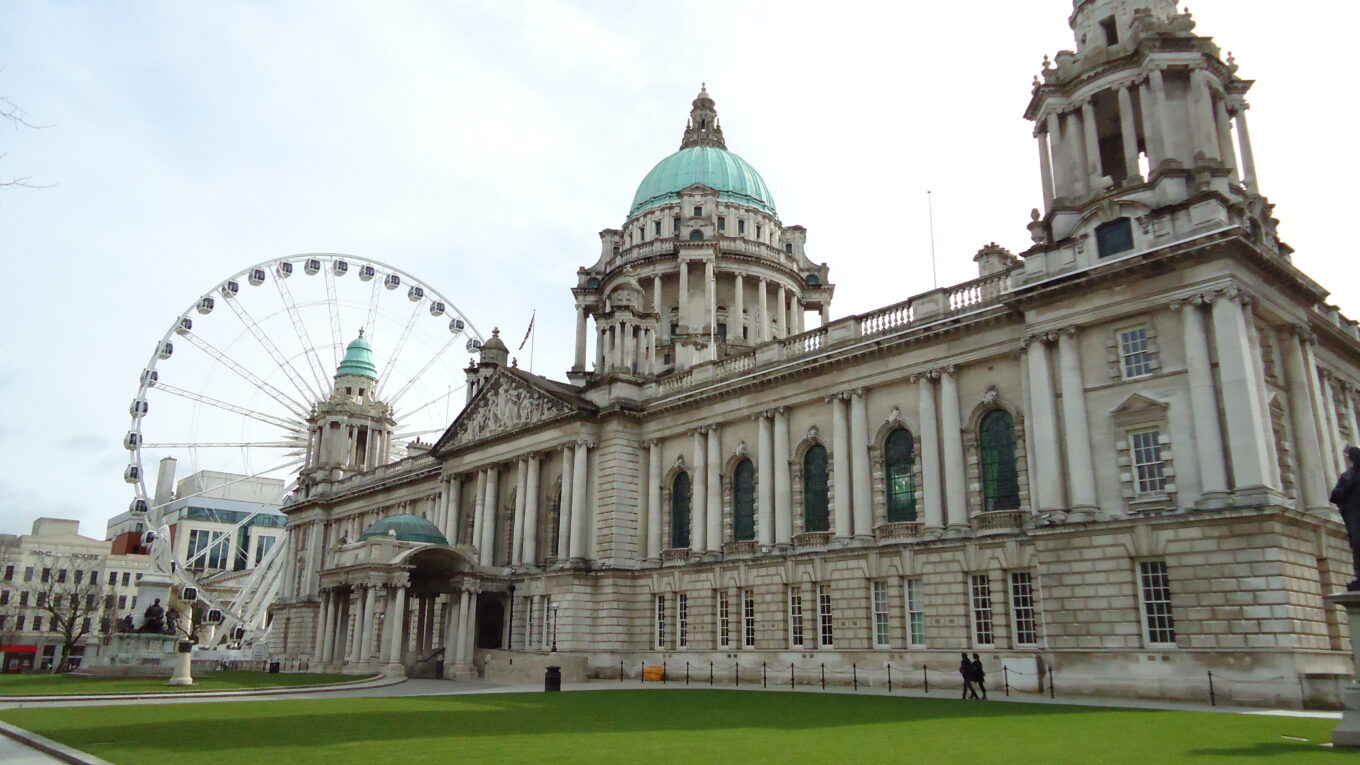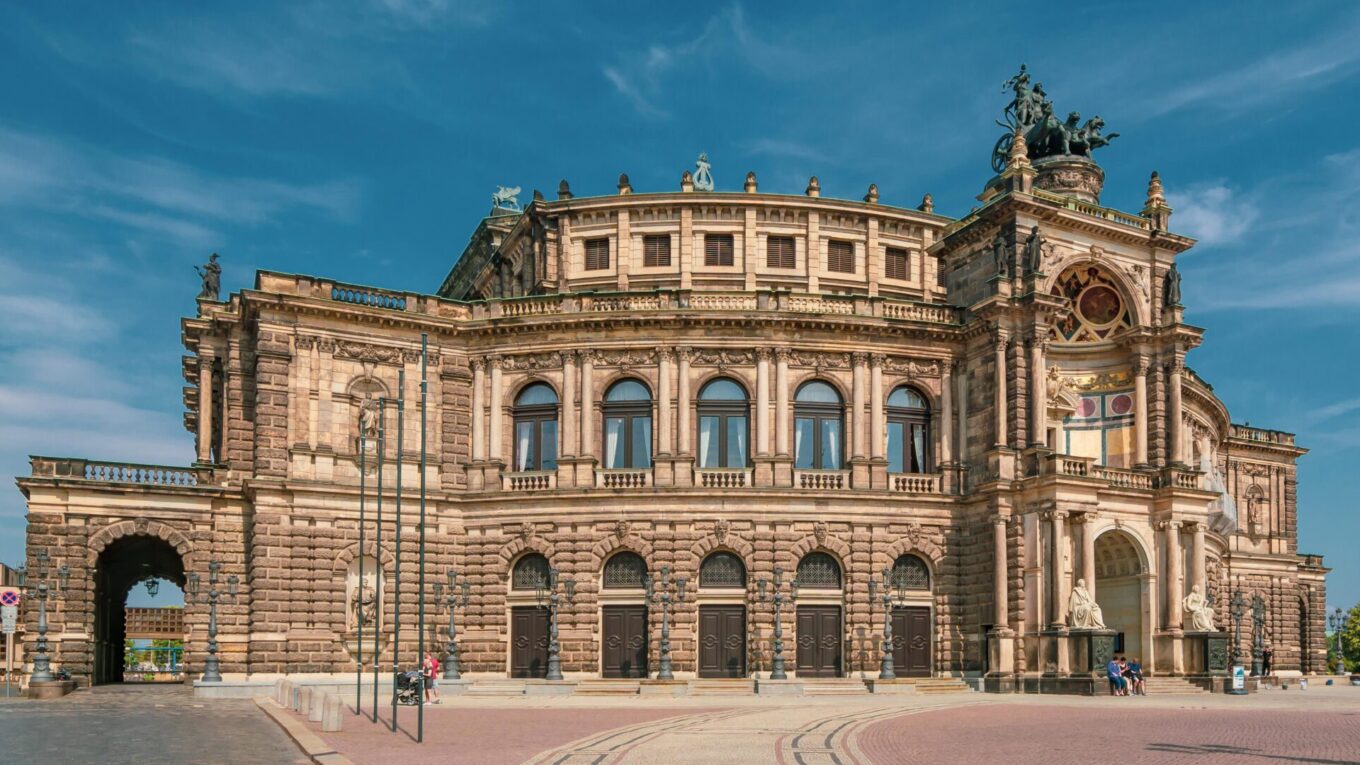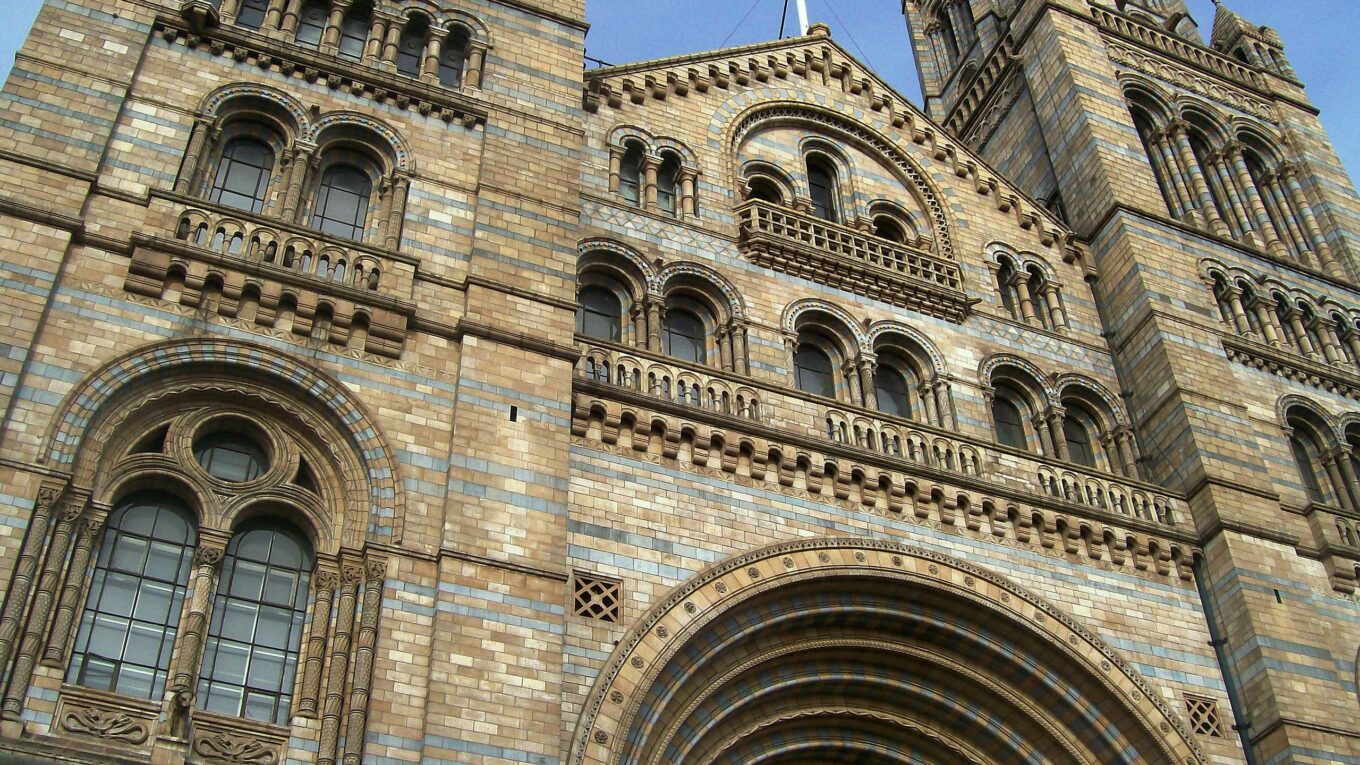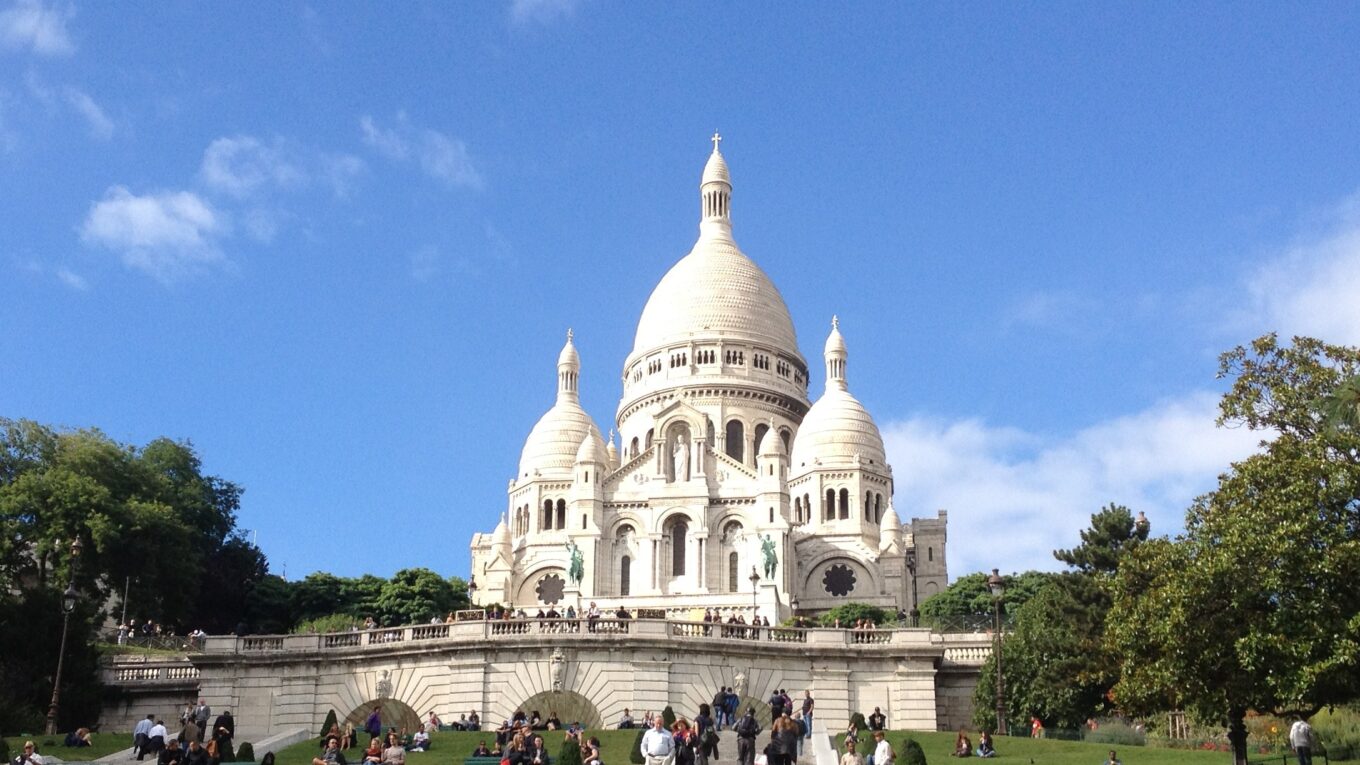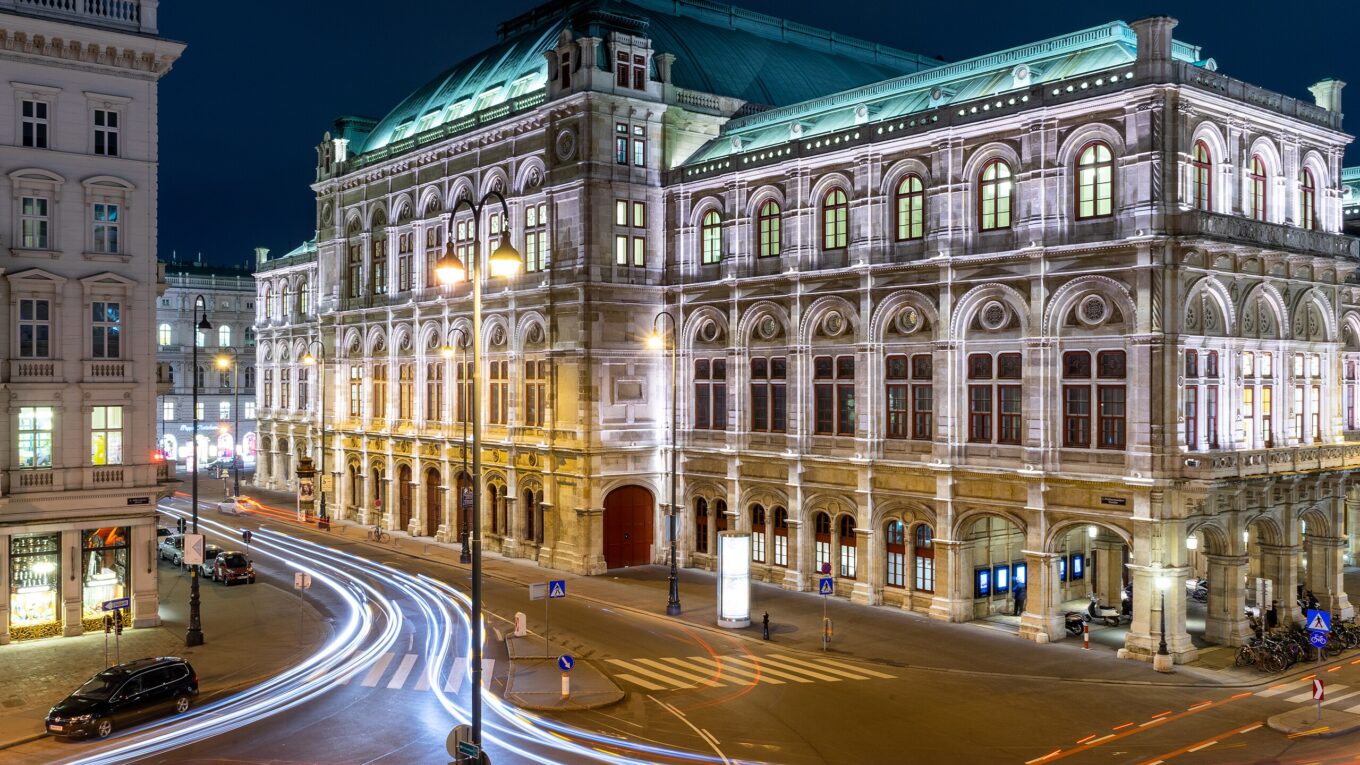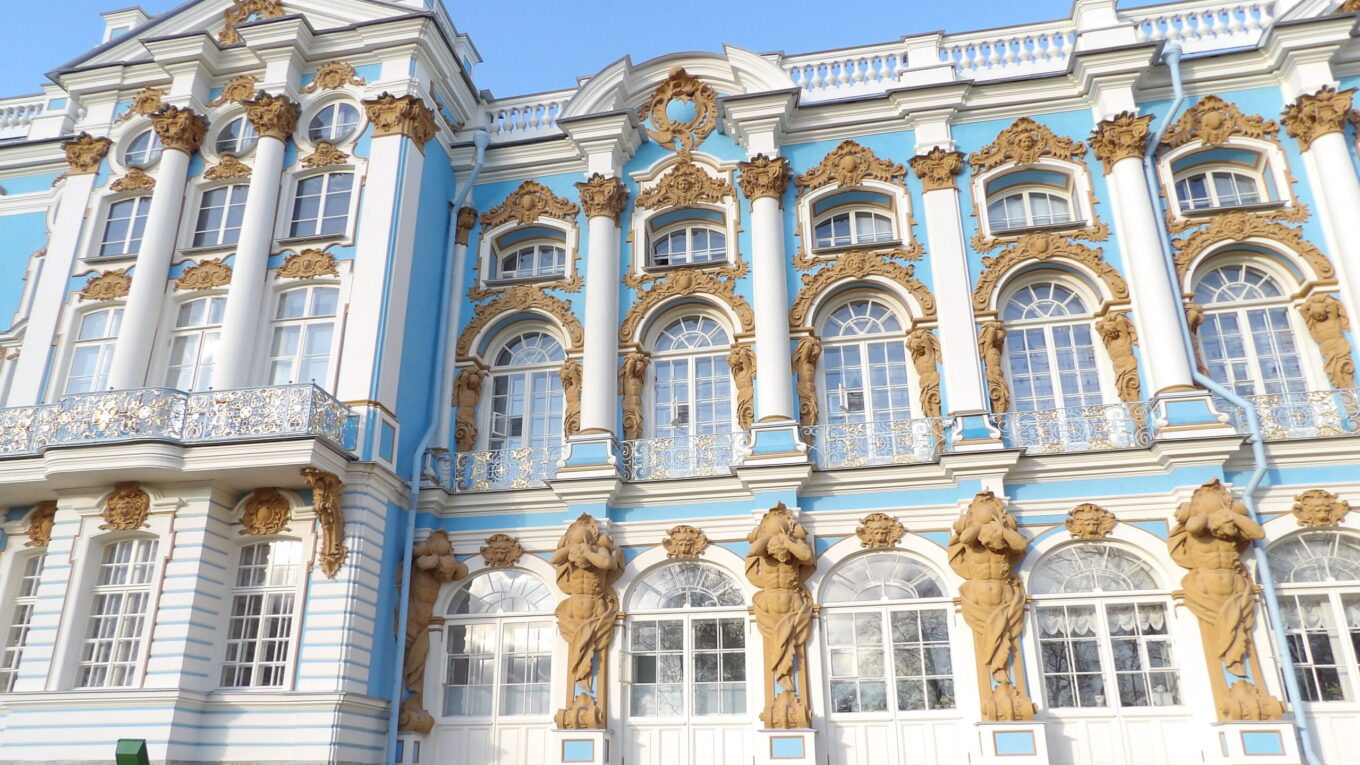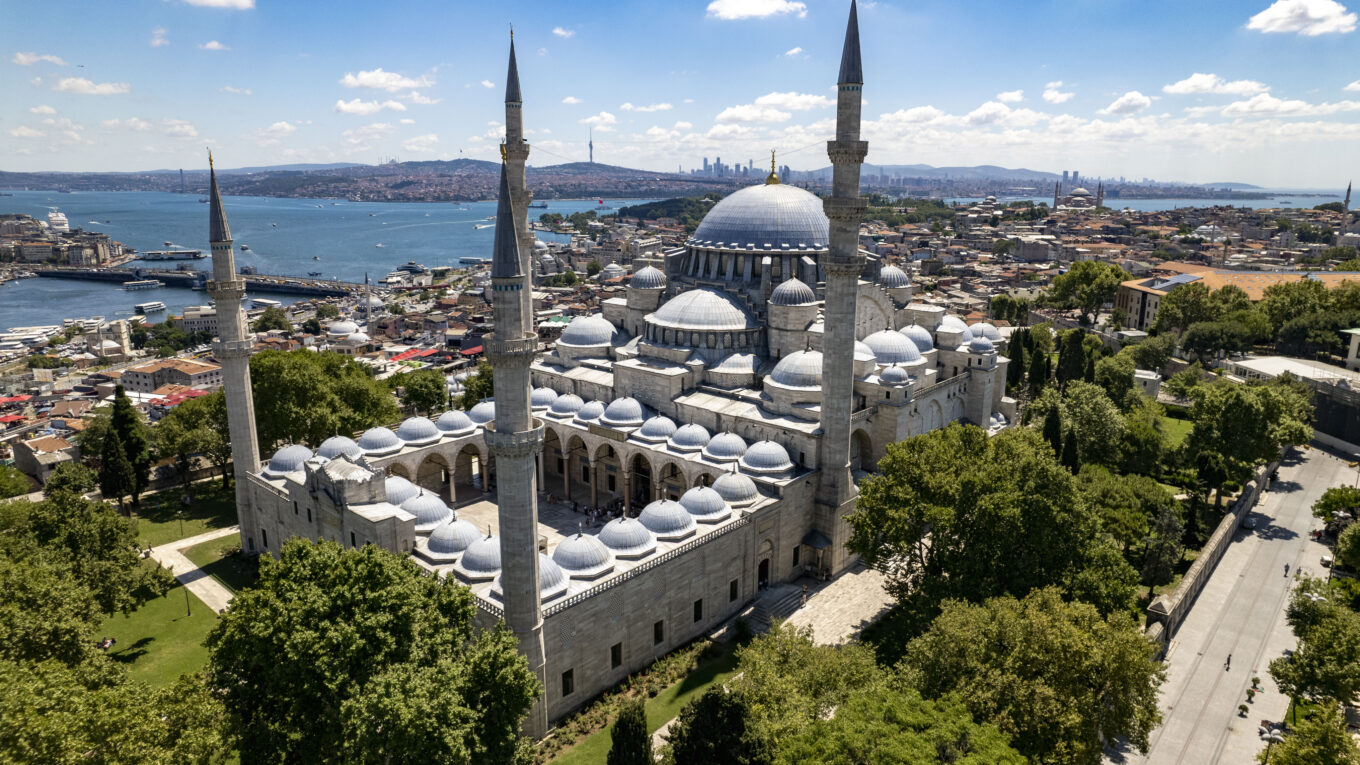Top 20 Examples of Baroque Revival Architecture
Baroque Revival Architecture, often referred to as NeoBaroque, was a popular building style during the Revival Period of the 19th century. The Revival Period was an architectural age focused on recreating the historic buildings of the past. Baroque Revival Architecture mimics the structures of the Baroque Age which began in the early 17th century. Baroque Revival Architecture was a key component in the Revival Era, and today many examples of NeoBaroque Buildings can be found throughout the world. The list below will highlight 20 of the world’s greatest examples of Baroque Revival Architecture, and take a deep look at the history and characteristics of this important style.
When was the Baroque Revival Period?
The Baroque Revival period was a movement in architecture that emerged in the mid-19th century and continued up until the early 20th century. It was part of a larger movement known as the Revival Period.
There are many different styles of Revival Architecture, but they all revolve around the same theme: replicating the buildings of the past and redesigning them in a new way.
Baroque Revival Architecture coexisted alongside other revival styles, including NeoByzantine, NeoRomanesque, Neoclassical, NeoGothic, and NeoRenaissance.
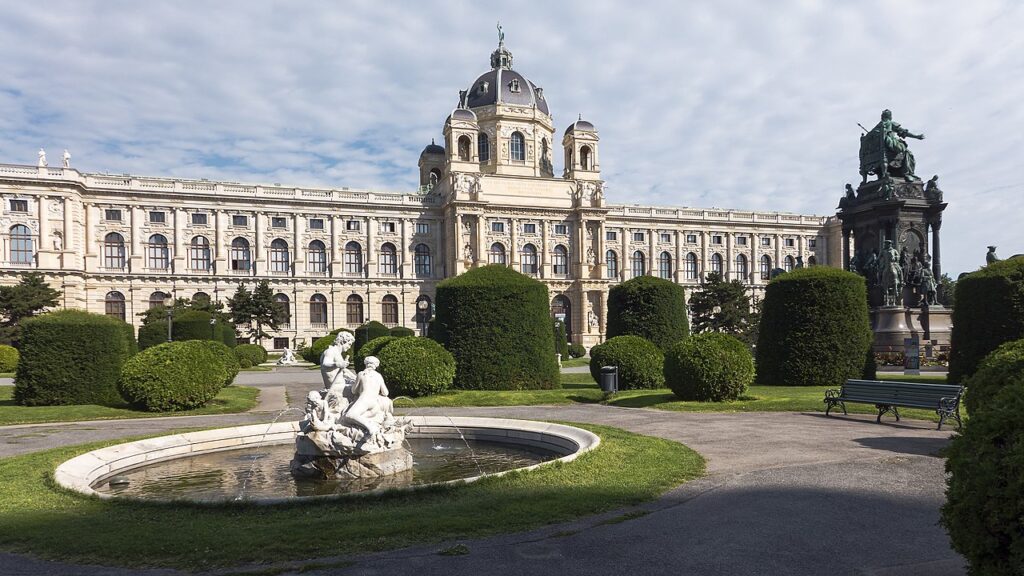
Eventually, during the 1920s and 30s, other more fluid and sculptural building forms became popular including Art Nouveau and Art Deco Architecture.
What was the Baroque Age?
The Baroque Age was a period in history that began in the 17th century and lasted until the end of the 18th Century. Baroque Architecture was a building form that utilized complex geometries, intricate details, and lavish decorations. Baroque Architecture is known for inspiring a sense of opulence, grandeur, and splendor. Many of the world’s largest palaces and most impressive monuments were designed in the Baroque Style, such as the Palace of Versailles in France and the Trevi Fountain in Rome.
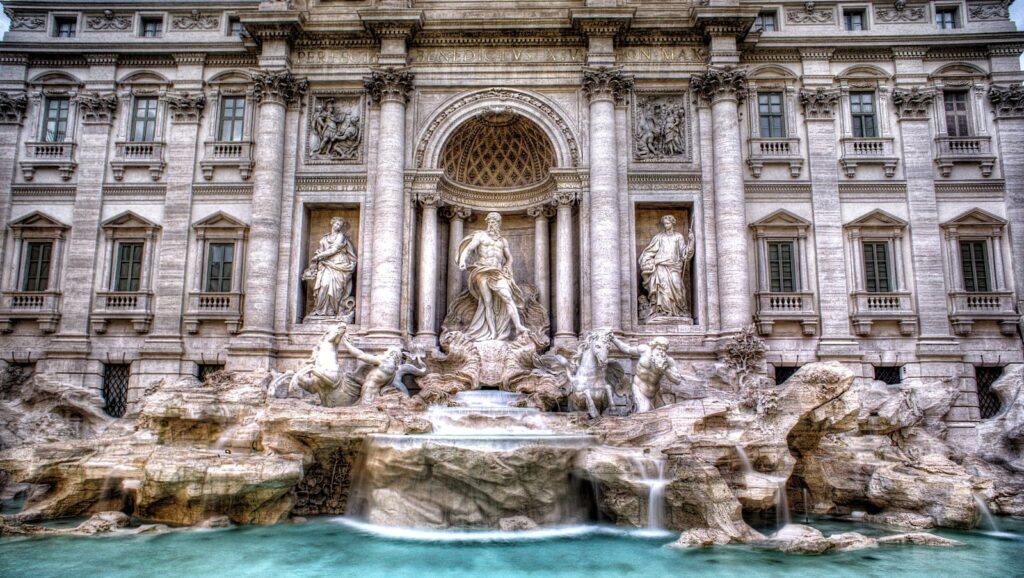
What’s the difference between Baroque Revival Architecture and NeoBaroque Architecture?
There is no difference between NeoBaroque Architecture and Baroque Revival Architecture, and the terms are often used interchangeably. Virtually all of the styles from the Revival Period can be described in this manner. (Ie…NeoRomanesque vs. Romanesque Revival and NeoRenaissance vs. Renaissance Revival)

Characteristics of Baroque Revival Architecture
The big idea behind Baroque Revival Architecture is to replicate the buildings of the Baroque Age. Therefore, the characteristics of both styles are nearly identical. One major difference is that Baroque Revival Buildings are a lot more subdued than their original Baroque counterparts, but buildings from both styles are often indistinguishable,
Elements from Classical Architecture
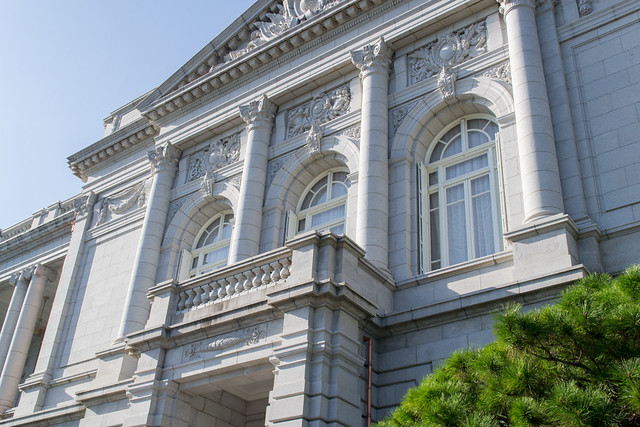
Baroque Revival borrows many elements from the Classical Architecture of the Greeks and Romans. These elements include, but are not limited to: pediments, friezes, cornices, balustrades, and column capitals from the Classical Orders. (Doric, Ionic, and Corinthian) These same characteristics can be found in other architectural styles like Renaissance and NeoClassical. During the Baroque Age, these elements were often mixed with works of sculpture and other intricate building details. The image above shows the exterior of Akasaka Palace in Tokyo. Here you can see several classical building components including Corinthian Columns, Balustrades, and a pediment.
Sense of Grandeur
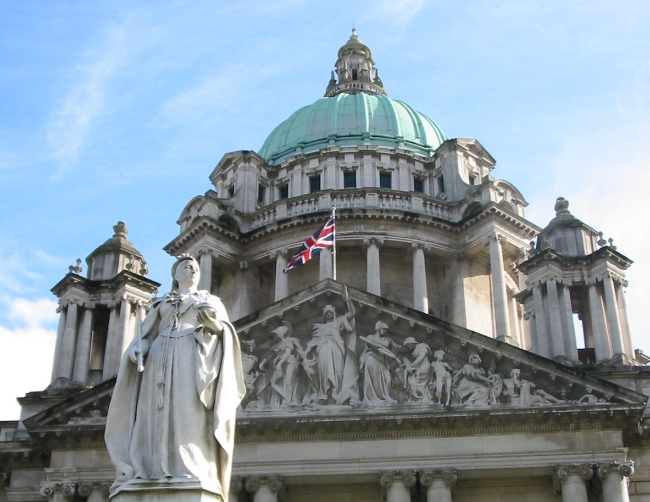
During the original Baroque age of the 17th and 18th centuries, buildings were meant to inspire, embolden, and provide a sense of amazement to local populations. Rulers wanted to show off their wealth and prosperity so they utilized complex geometries, intricate details, and lavish materials. The image above shows Belfast City Hall, in Belfast Northern Ireland. It was constructed in the Baroque Revival Style to illustrate the power and prestige of Belfast at that point in history.
Intricate Details
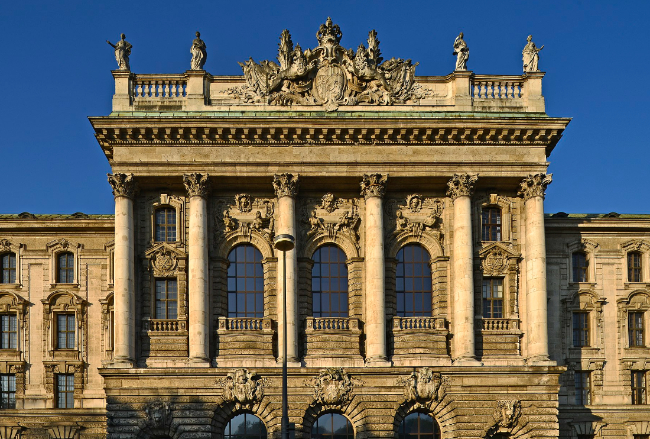
Intricate details are another major component in both Baroque Architecture and Baroque Revival Architecture. During the Baroque Age, architecture was used by the church to inspire local populations, and by the ruling elite to show off their immense wealth. The use of intricate, exuberant, and over-the-top detailing, was a common tool that led to buildings that were equal parts sculpture & architecture. The image above shows several intricate details within the facade of the Justizpalast in Munich Germany.
Domes
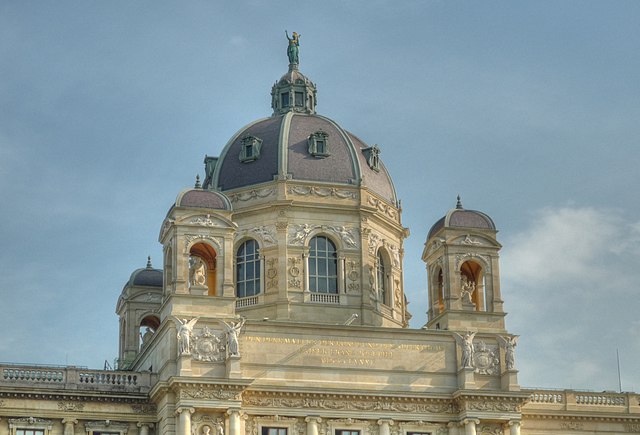
Domes are another key feature in many buildings from the NeoBaroque Period. Domes were often covered with sculptural elements on the exterior and had intricate frescoes painted on the interior. They would cap important spaces within buildings and they also helped illustrate a sense of grandeur and importance. In the image above you can see the dome of the Museum of Natural History in Vienna Austria. The entire dome is embellished with sculptures and sits above a large atrium within the museum.
Baroque Sculpture
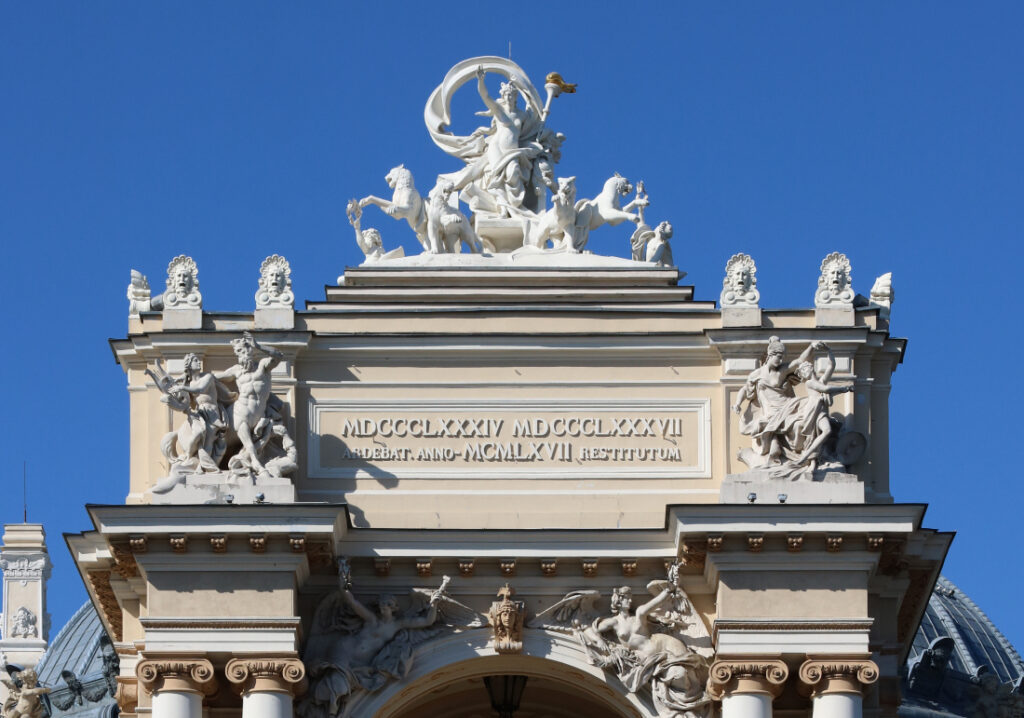
Baroque Sculpture also played an important role in NeoBaroque Architecture. During the Baroque Age, artists like Gian Lorenzo Bernini pushed the limitations of sculpture by creating ornate statues that were lifelike and full of motion and movement. In the image above you can see the main archway in the facade of the Odesa National Theater, in Odesa Ukraine, Here, Baroque Sculpture is used to embellish the main entrance and make the building seem grand and important.
What are the greatest examples of Baroque Revival Architecture?
Baroque Revival Architecture was one of the key typologies within the overall Revival Movement. The list below will highlight 20 of the World’s Greatest Examples of Baroque Revival Architecture, and provide an in-depth look at the history and importance of the NeoBaroque Style.
1. Akasaka Palace – Tokyo, Japan
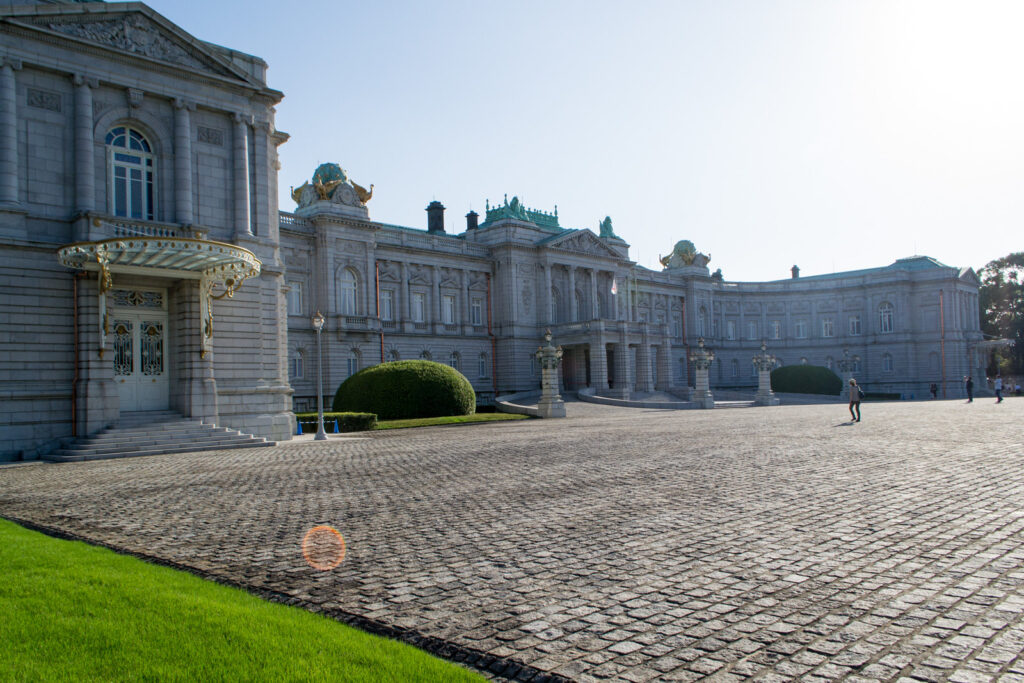
Akasaka Palace is a large royal residence located in Tokyo. It was commissioned by the Crown Prince of the Empire of Japan and was completed in 1909. It was designed by a Japanese Architect who was sent to Europe to study French Architecture during the late 1800s. He returned to construct several of Japan’s greatest works of Revival Architecture, including Akasaka Palace and the Kyoto National Museum.
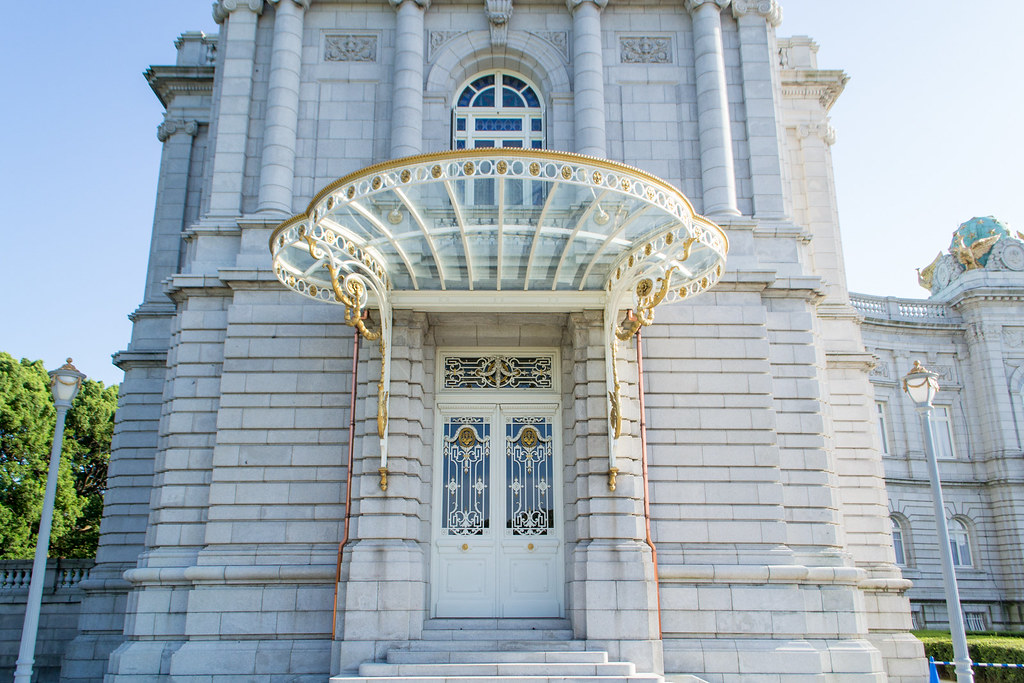

Akasaka Palace contains all of the typical elements of Baroque Revival Architecture. It utilizes many different classical elements like pediments, balustrades, and Ionic Columns. It also contains many NeoBaroque sculptures with a strong Beaxs-Arts influence. Today Akasaka Palace is one of the most iconic buildings in all of Japan, and it serves as an important state guest house for the Japanese government.
2. Oceanographic Museum – Monaco, Monaco
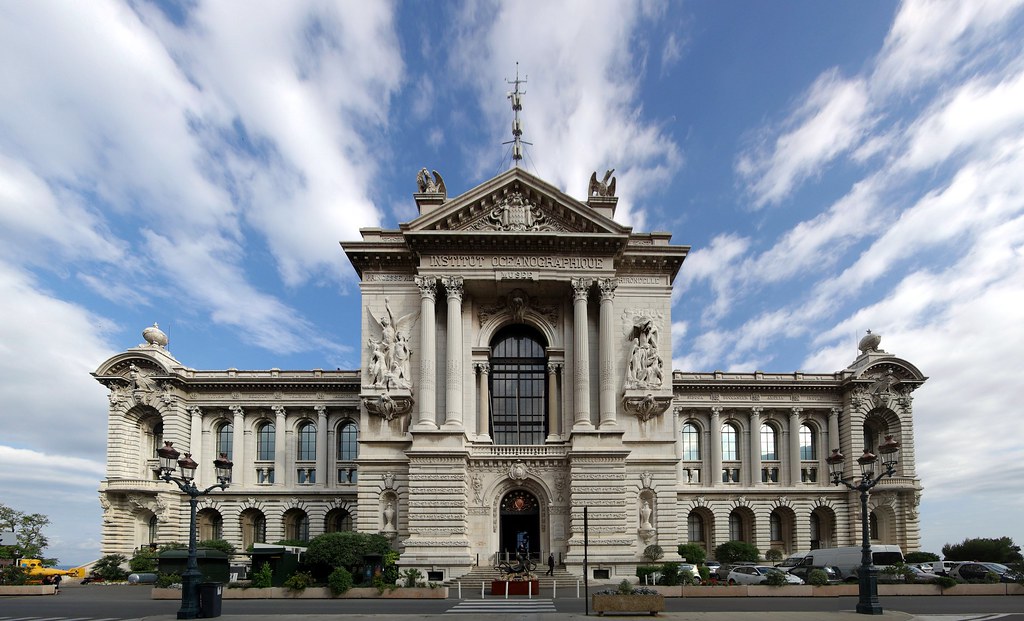
The Oceanographic Museum of Monaco is one of the world’s most stunning examples of Baroque Revival Architecture. The museum is located in central Monaco, perched high on a cliff overlooking the Mediterranean Sea. It houses a collection of exhibits and artifacts focused on ocean life and marine biology. The museum opened its doors in 1910 and has been an iconic structure in Monaco’s historic center ever since.
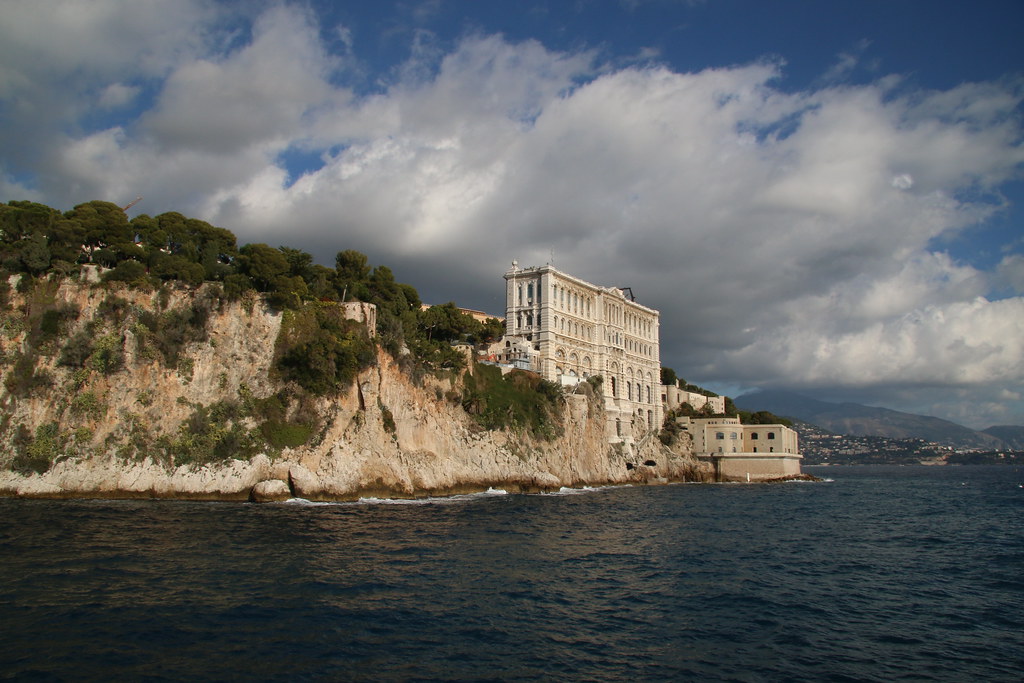
The Monaco Oceanographic Museum was an incredibly ambitious project. There were many challenges associated with constructing such a massive structure in such a treacherous location. A team of engineers and builders had to work together to create a complex foundation that utilized the bedrock along the city’s rugged Mediterranean coastline. The museum saw a major restoration during the early 21st century, and today it remains one of Monaco’s most visited attractions.
3. Belfast City Hall – Belfast, Northern Ireland, UK

Belfast was an important city in Ireland during the late 19th century. It saw a large population boom thanks to the Industrial Revolution. At the time, Belfast’s population rivaled Dublin’s, and it was an important center for manufacturing and shipbuilding. Eventually, the local government wanted to expand and create a new city hall to replace a smaller building completed in 1871. City officials chose Baroque Revival for the design, and the building was completed in 1910.
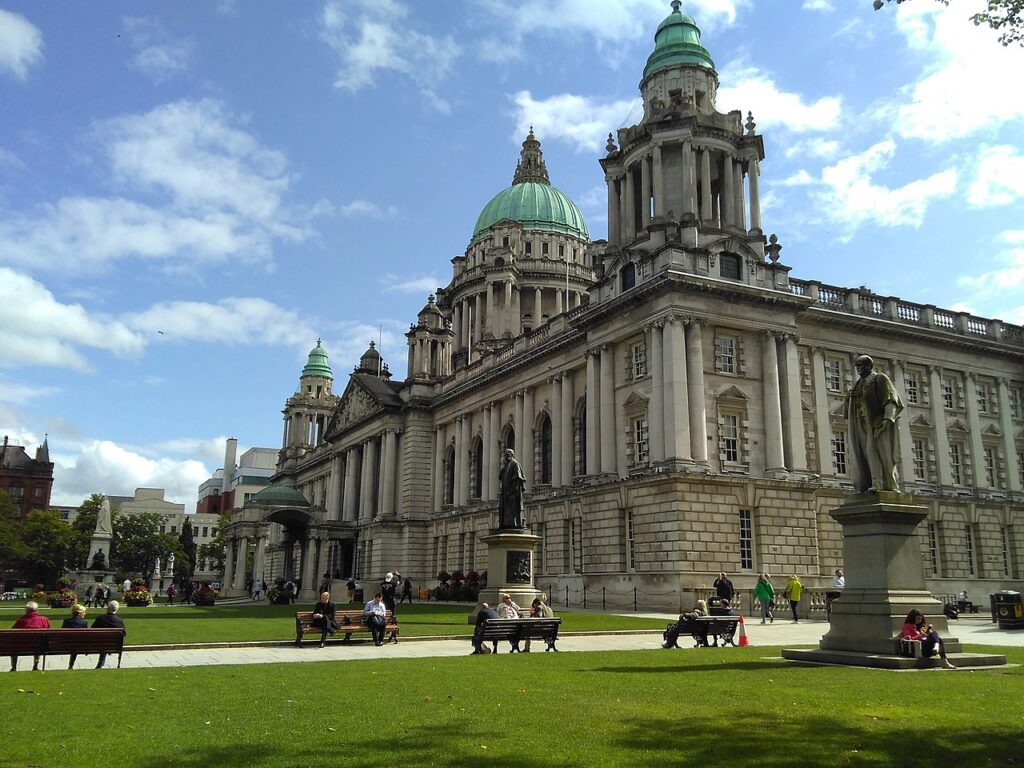
Belfast City Hall was designed to resemble the architecture of Sir Christopher Wren. Wren was a Baroque Age architect who constructed dozens of buildings throughout London including St. Paul’s Cathedral and the Old Royal Naval College. Today Belfast City Hall still houses the city’s local government, and the green space that surrounds the building is one of Belfast’s most popular public spaces.
4. British Columbia Parliament Buildings – Victoria, British Columbia, Canada
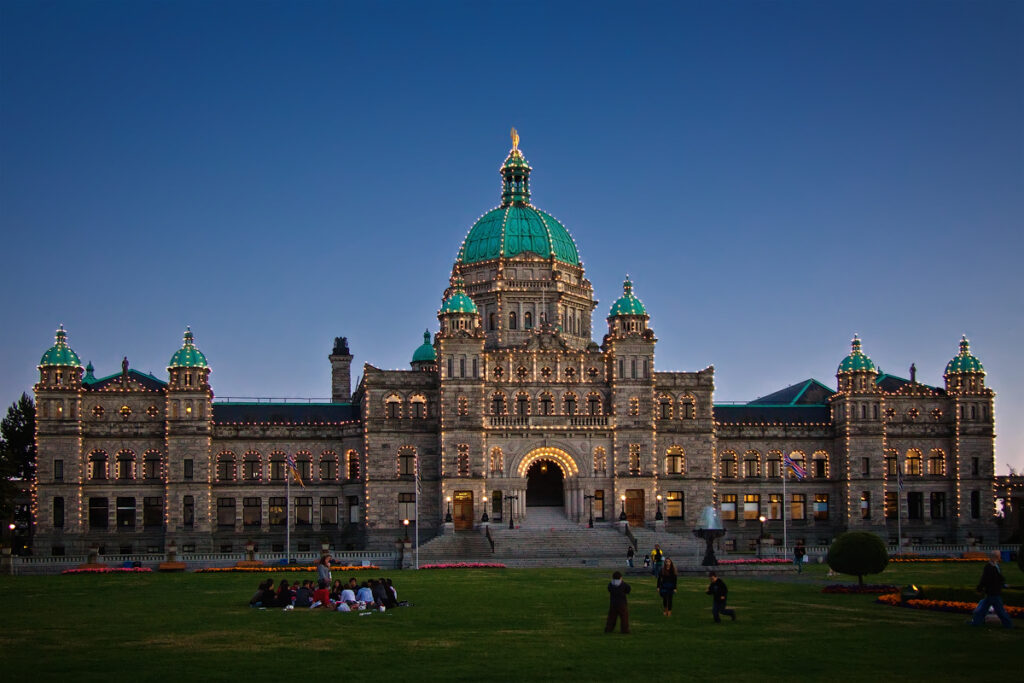
Victoria is a city in Western Canada named for Queen Victoria of the United Kingdom. It was first settled during her reign in 1843 and was an important city in this part of the British Empire. Today Victoria serves as the capital of the Canadian Province of British Columbia. Victoria sits along a large coastal area that contains other cities such as Vancouver and Seattle. The government for the entire British Columbia Province is housed within the BC Parliament Building, and it’s one of the region’s greatest examples of Baroque Revival Architecture.
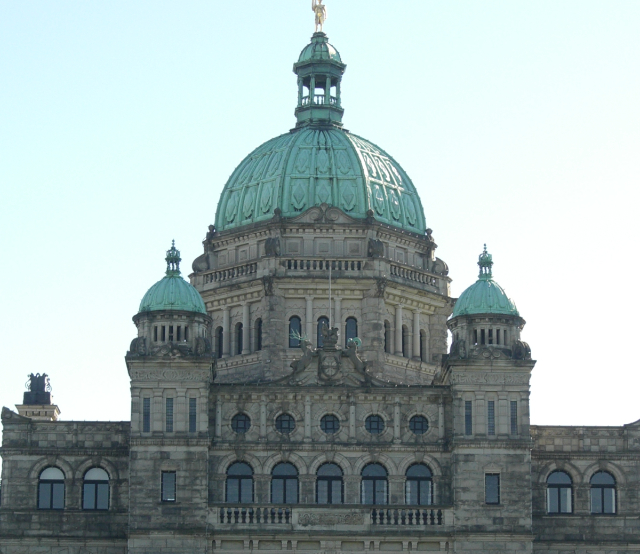
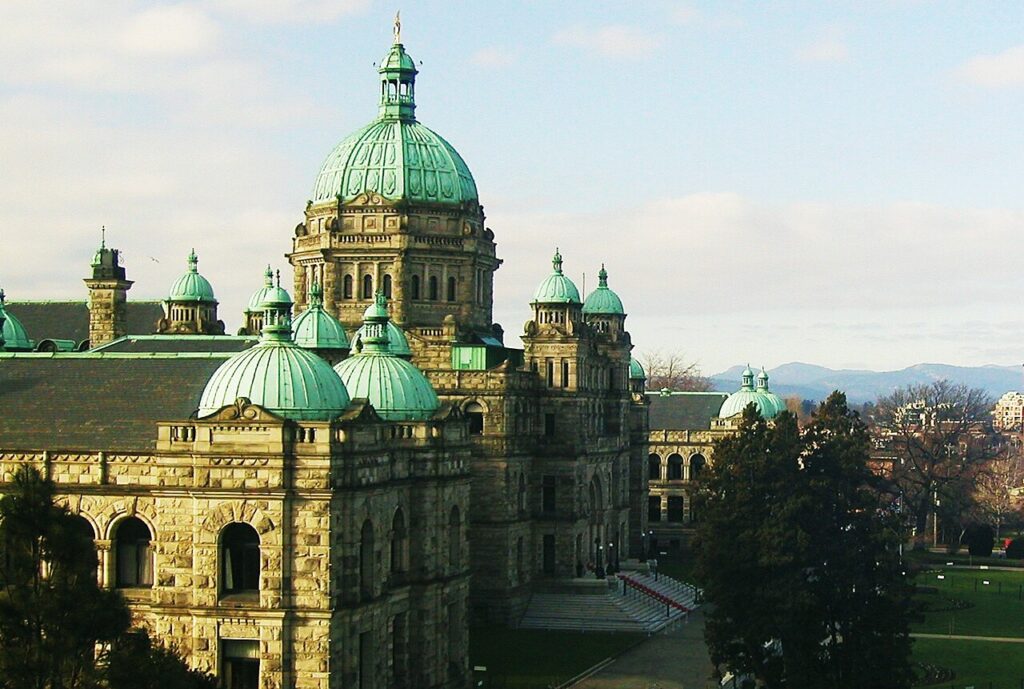
The building’s NeoBaroque design pays homage to the original British Rulers of the city, and it resembles many other government buildings located throughout The United Kingdom. The parliament building was completed in 1897 at a time when both Victoria and Vancouver were emerging as economic centers in this part of Canada. Today the British Columbia Parliament Building still functions as the center of the BC Government, and it’s a major icon within the city of Victoria.
5. Museum of Fine Arts & National History Museum – Vienna, Austria
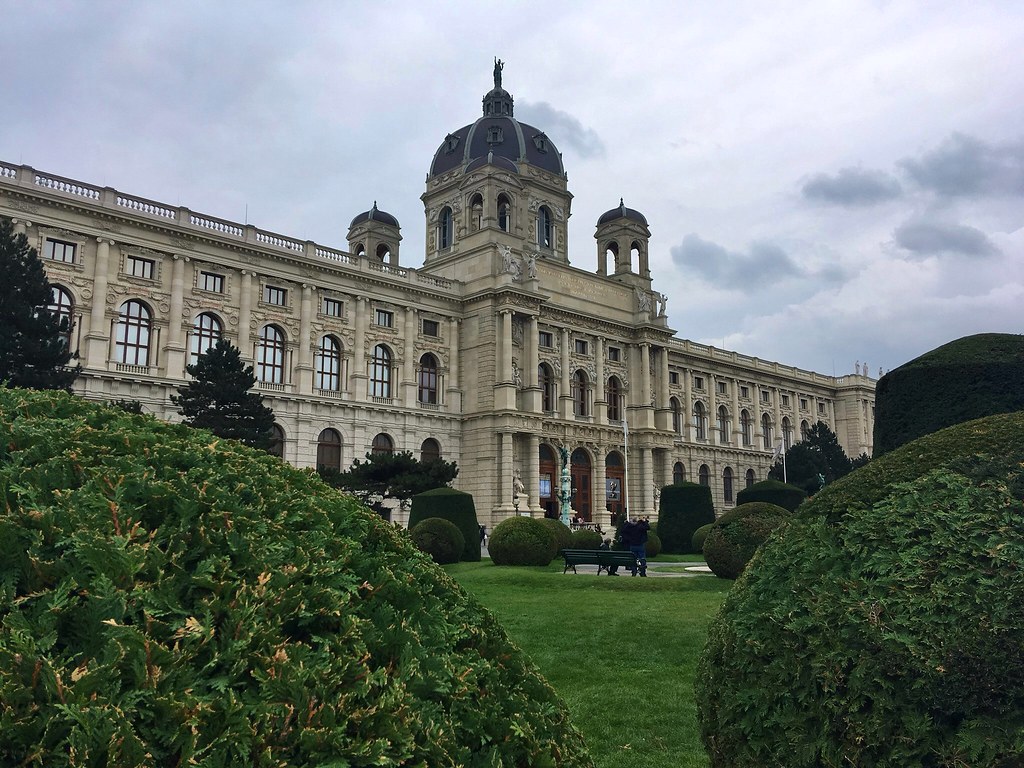
The Austrian Empire was one of the most powerful states during the Baroque Age. As a result, the Austrian Capital of Vienna is filled with many works of Baroque Architecture including Hofburg Palace and Schönbrunn Palace. During the Revival Movement of the 19th Century, many new works of Baroque Revival Architecture were constructed to blend with Vienna’s older structures. Two great examples of this are the Museum of Fine Arts and the National History Museum.
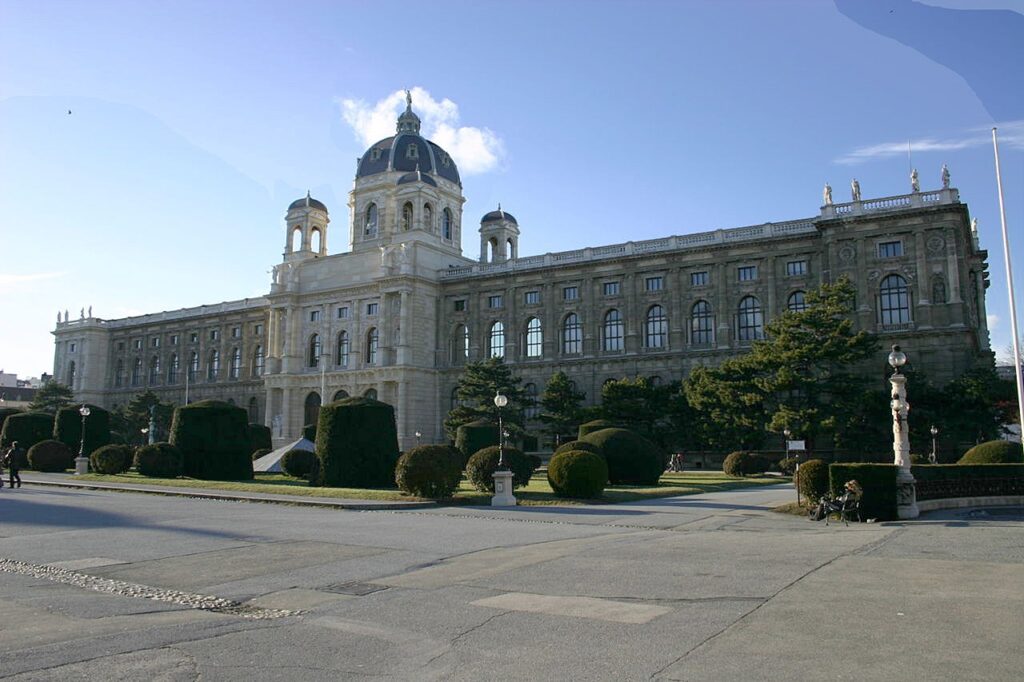
Both buildings were constructed in a nearly identical manner, and they are located right across from one another. The space between them is known as Maria-Theresien-Platz and it’s one of Vienna’s many popular public spaces. Both buildings house important exhibits and are part of Vienna’s renowned museum quarter. To get a sense of the entire Maria-Theresien-Platz you can check out this Photo Sphere which shows the relationship between both museums.
6. Dolmabahçe Palace – Istanbul, Turkey
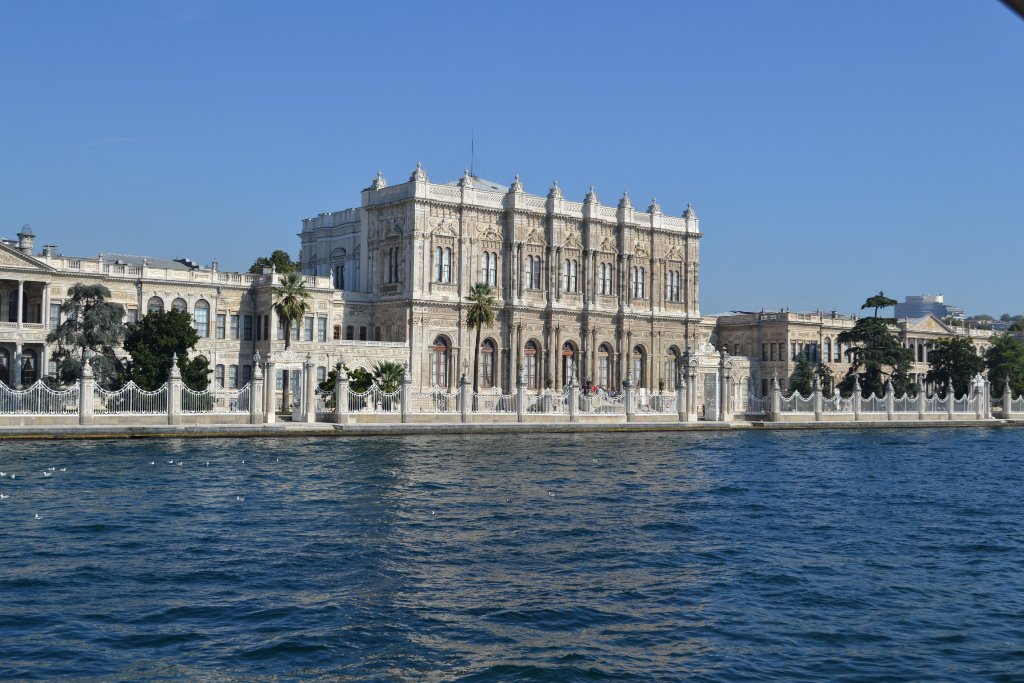
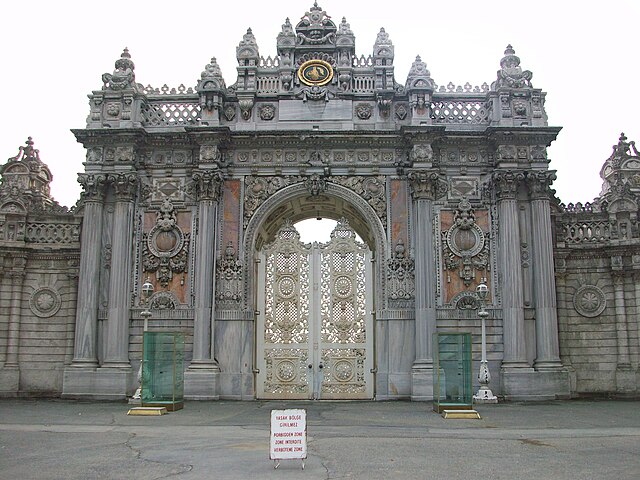
Dolmabahçe Palace is one of several grand palaces constructed by the late Ottoman Sultans in Istanbul. It opened in 1856 and served as a royal residence and the general administration center within the Ottoman Empire. The design of the building was mainly done in the Baroque Revival Style, and it borrows many elements from traditional Baroque, Rococo, and Ottoman Architecture. Dolmabahçe Palace is located north of Istanbul’s city center, close to a few other Ottoman Palaces from the same era including Çırağan Palace and Beylerbeyi Palace.
7. The Elms Mansion – Newport, Rhode Island, United States

Known as a playground for Guilded Age Socialites in the United States, Newport Rhode Island is home to dozens of America’s most impressive mansions. Many of these were constructed in various styles, including Renaissance Revival, Baroque Revival, and the Beaux Arts Style. The Elms was completed in 1901, and built by the wealthy American business mogul Edward Julius Berwind. The Elms Mansion is a great example of the opulence and splendor that is often found in Baroque Revival Architecture. The structure contains lavish materials and many baroque sculptures which show off the owner’s immense wealth.
8. Odesa Opera House – Odesa, Ukraine

Located in the Ukrainian port city of Odesa, the Odesa Opera House is an impressive work of Baroque Revival Architecture in Eastern Europe. It was completed in 1887 and replaced an older building that had burned down. The Baroque Revival Design was chosen to connect with many of Europe’s most iconic opera houses like the ones in Vienna, Paris, and Milan. The facade of the building contains many of the typical elements of the NeoBaroque Style including Baroque Sculptures, intricate details, and a sense of grandeur.
9. Ashton Memorial – Lancaster, England, UK
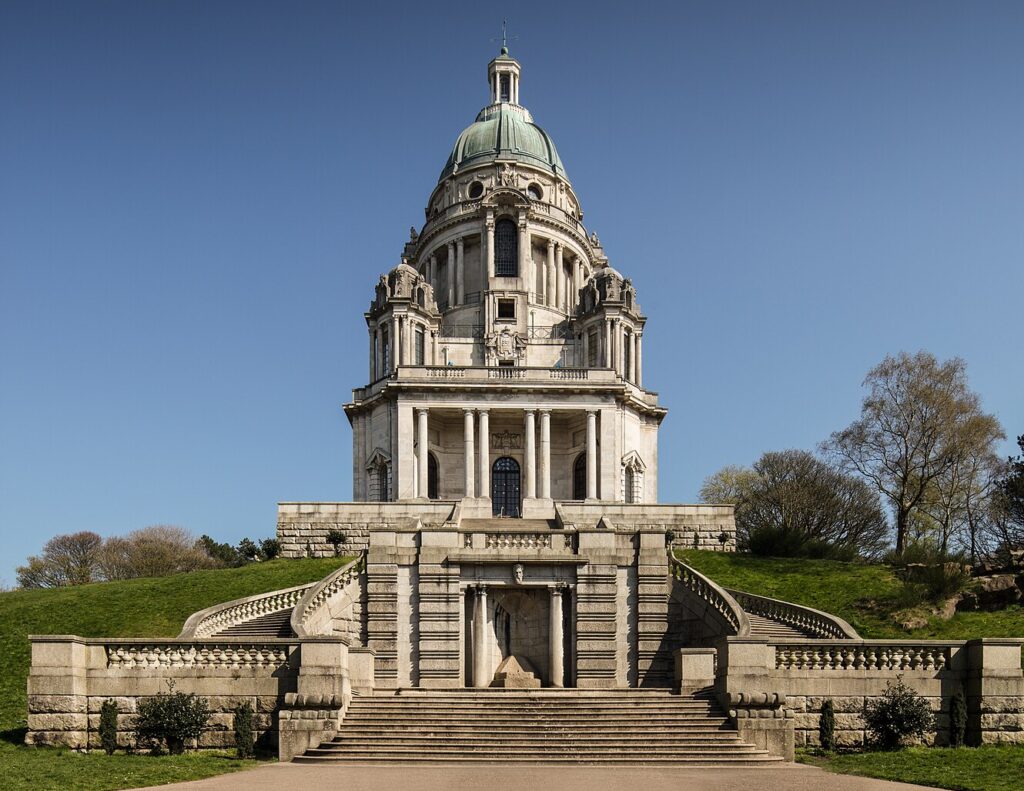
Ashton Memorial is a public monument in Lancaster, Lancashire, England. It was financed by a wealthy businessman named James Williamson who held the title of 1st Baron of Ashton. Williamson commissioned the construction of the Ashton Memorial in 1907 to commemorate his wife who had passed several years prior. The memorial is located in a large expansive park on the eastern side of Lancaster. It’s one of several notable works of Revival Architecture within the city, and it stands just a short 15-minute walk from Lancaster Cathedral, a great example of Gothic Revival.
10. Burgtheater – Vienna, Austria
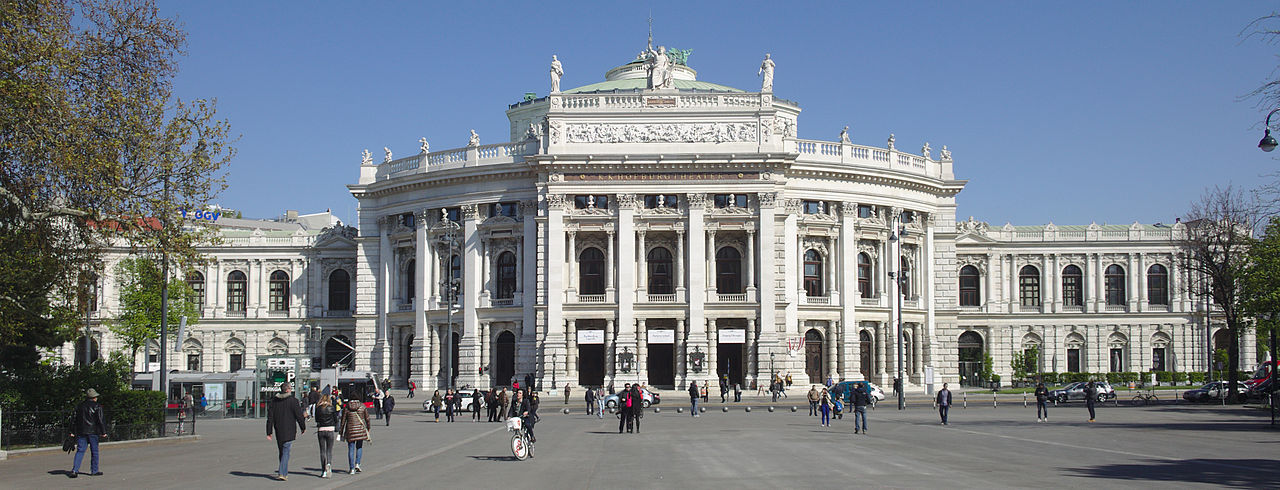
The Burgtheater is an iconic work of Baroque Revival Architecture located in the Austrian Capital, Vienna. It’s part of the massive Rignstrasse which is a ring of prominent 19th-century buildings surrounding Vienna’s historic core. The Burgtheater contains all of the typical elements from Baroque Revival Architecture including intricate details, complicated geometries, and elements from Classical Architecture. Today the Burgtheater still hosts live events and is one of dozens of prominent venues that embrace Vienna’s vibrant cultural background.
11. Széchenyi Thermal Baths – Budapest, Hungary

Budapest is located atop a vast thermal spring, and it has been home to bathhouses and spas throughout its entire history. These bathhouses existed within the Kingdom of Hungary, but they were later greatly utilized by the Ottoman Empire which took control of Budapest in the 16th century. Ottoman rule wouldn’t last in the region, but the connection with bathhouses would remain until modern times. The Széchenyi Thermal Baths are one of Budapest’s most popular attractions. They are a collection of pools, spas, and other amenities all housed within a large Baroque Revival Building completed in 1913.
12. Cardiff City Hall – Cardiff, Wales, United Kingdom
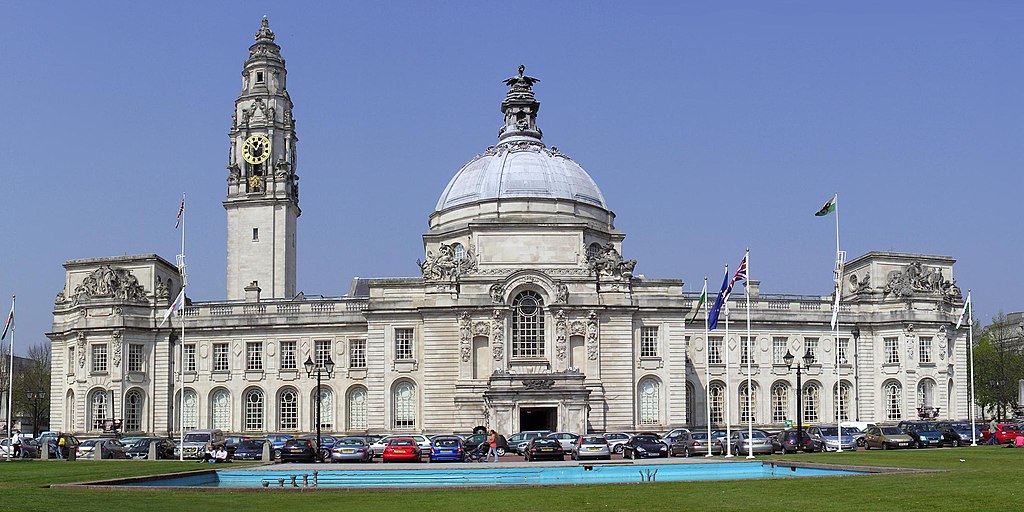
Cardiff City Hall is one of several impressive examples of Baroque Revival Architecture built in the United Kingdom around the turn of the 19th century, Many people refer to this particular style as the “Edwardian Style” as it was synonymous with the reign of King Edward VII who ruled from 1901 to 1910. Cardiff City Hall has many elements found in Neo Baroque Architecture including a dome, intricate details, and Baroque Sculptures. It is located close to other landmarks such as Cardiff University, Cardiff Crown Court, and a Norman-age fortress known as Cardiff Castle.
13. Christiansborg Palace – Copenhagen, Denmark

Christiansborg Palace is a work of Neo-Baroque Architecture located on the island of Slotsholmen in central Copenhagen. The palace was built in the same location as Copenhagen Castle, which was a Medieval Fortification with foundations dating all the way back to the 12th century. The older castle was destroyed by a fire in 1884, and the current palace was completed in 1928. The building features many important elements from Baroque Architecture, such as a Mansard Roof, and an intricately decorated central spire.
14. Ortaköy Mosque – Istanbul, Turkey
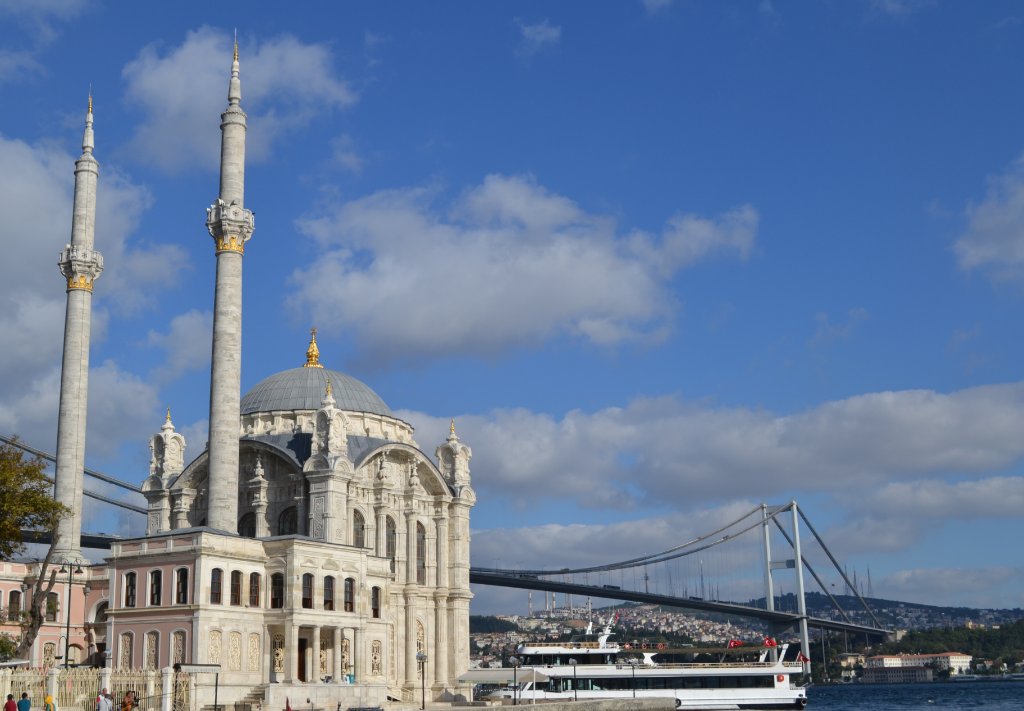
Ortaköy is a neighborhood in Istanbul that lies north of the city center, on the eastern shore of the Bosphorus. It’s a popular hangout spot for local Turks and the area is filled with many bars, hookah lounges, and restaurants. The Ortaköy Mosque is one of the most architecturally significant mosques in the entire city. It’s a rare example of an Ottoman Building designed in the Baroque Revival Style. It has many of the typical elements found in Neo-Baroque Architecture such as intricate stone carvings, lavish materials, and a strong sense of opulence and grandeur.
15. Justizpalast – Munich, Bavaria, Germany
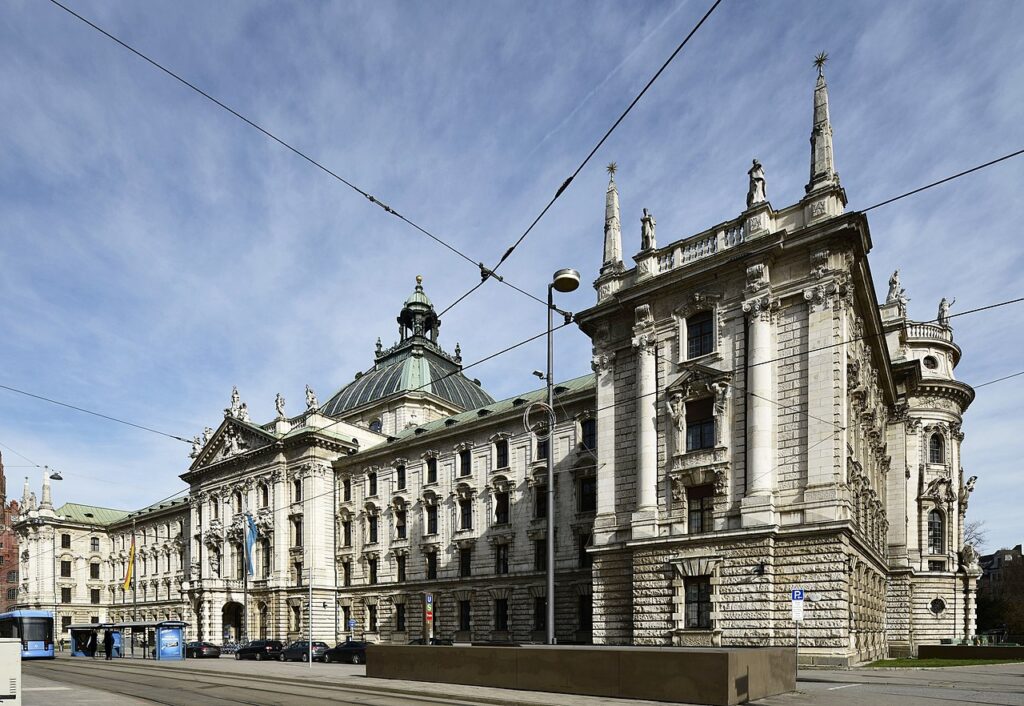
Munich is the capital of the German region of Bavaria and was once the capital of the Kingdom of Bavaria. The city has a long history and it’s filled with many incredible buildings, dating from the Gothic, Renaissance, and Baroque Ages. The Justizpalast is one of the city’s many iconic buildings, and it serves as a major courthouse for the entire region. It was completed in 1897 and still looks largely the same as it did then, despite the devastation felt by many of Munich’s buildings during WWII.
Like Architecture of Cities? Sign up for our mailing list to get updates on our latest articles and other information related to Architectural History.
16. Straka Academy – Prague, Czech Republic
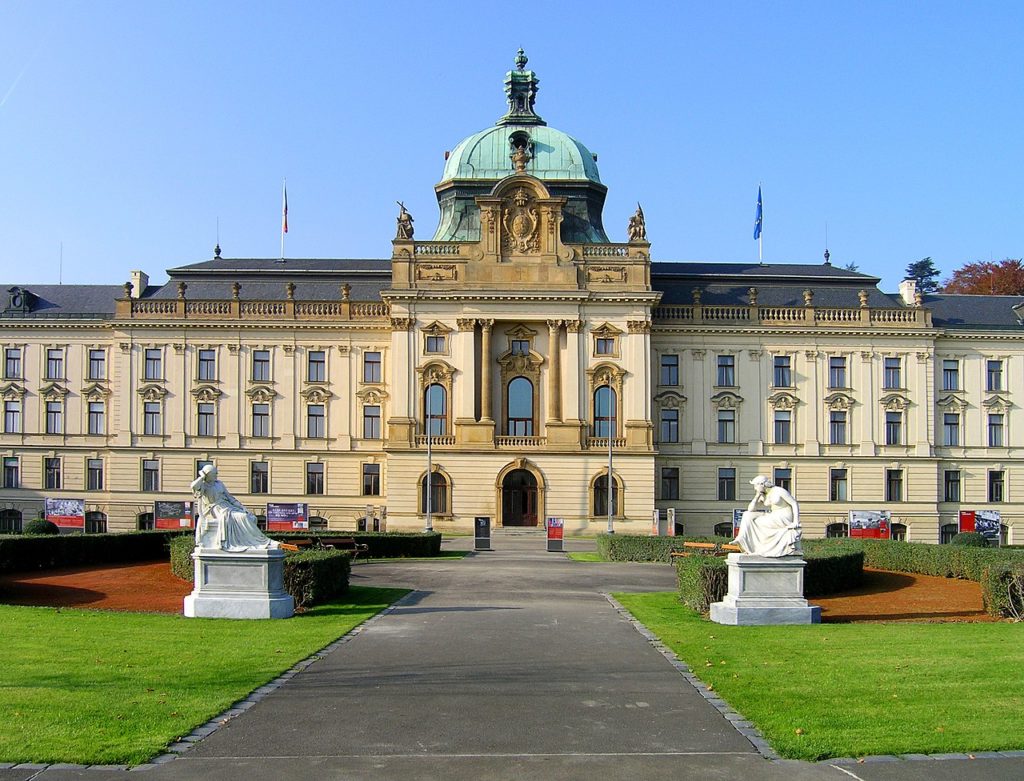
The Straka Academy Building is a late 19th-century Baroque Revival building in Prague. It currently houses several offices and other functions for the Government of the Czech Republic. It sits on the north bank of the Vltava River, across from Prague’s Old Town. It was completed in 1896 and the builders borrowed many of the features from other Baroque Buildings in the surrounding area.
17. Port of Liverpool Building – Liverpool, England, UK
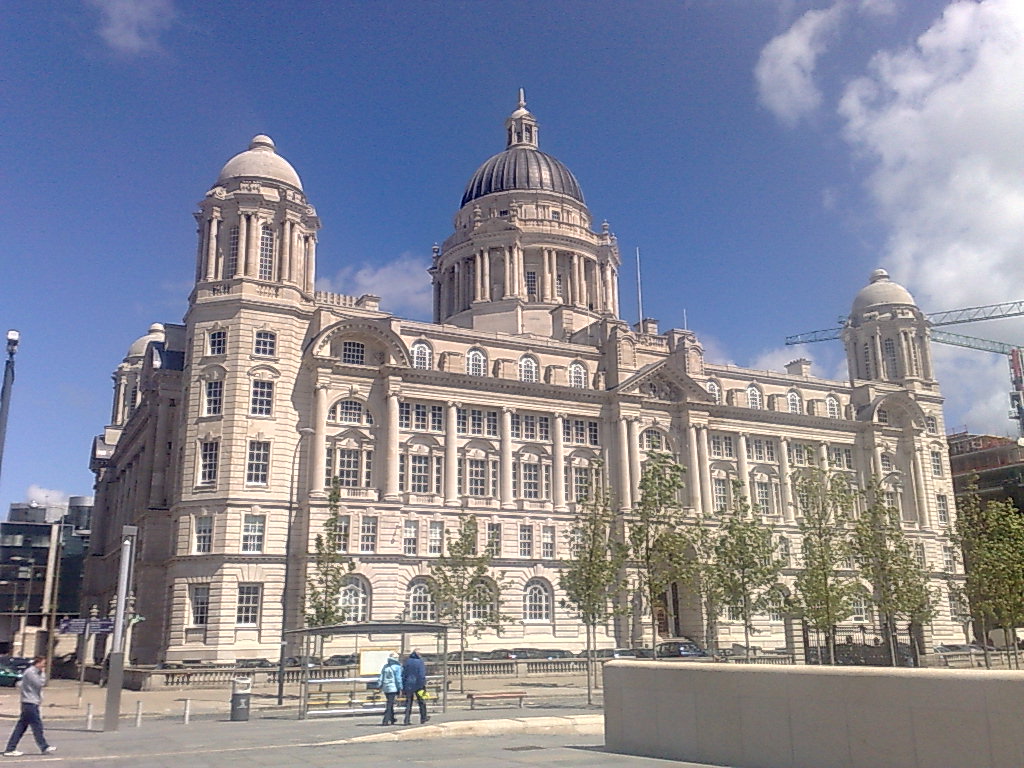
Like several other buildings on this list, the Port of Liverpool Building is a great example of Baroque Revival Architecture in the United Kingdom. Buildings from this era are often called “Edwardian” and are named for the English ruler Edward VII. The Port of Liverpool Building sits in the heart of the port city of Liverpool, near many other prominent structures. It contains all of the typical elements in Baroque Revival Architecture, including a large central dome, classical architectural elements, and many complicated geometries.
18. Bode Museum – Berlin, Germany
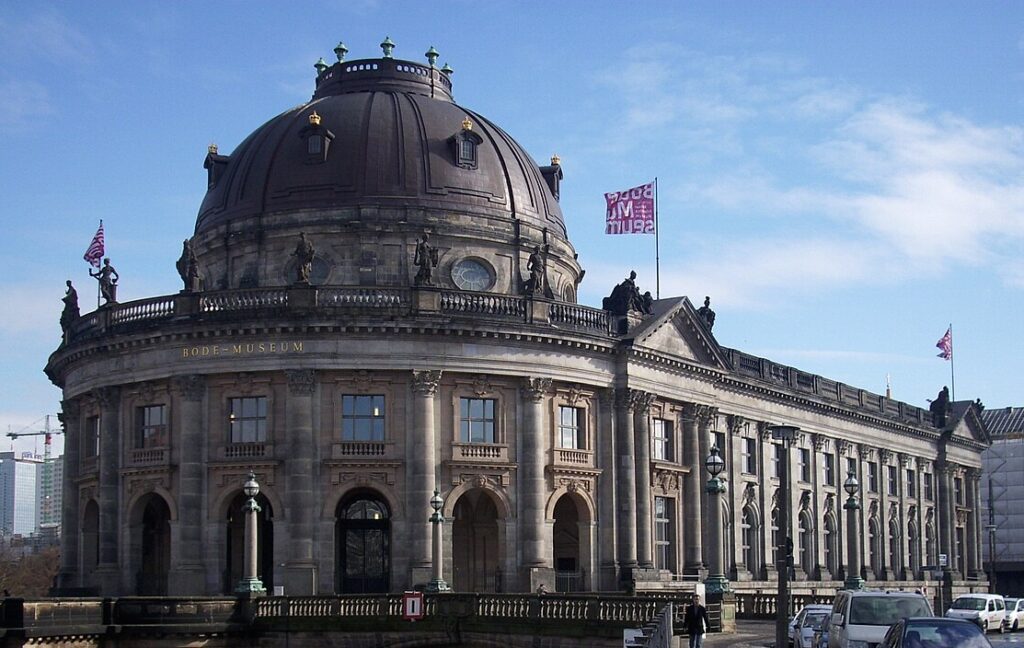
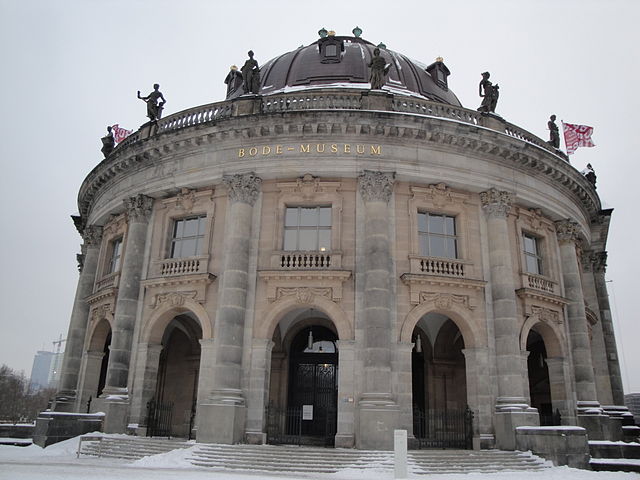
Located on Berlin’s famed Museum Island, the Bode Museum houses artworks ranging from the Byzantine Period up until the 19th century. It is located at the northern tip of Museum Island, and its unique shape responds to the natural curve of the island itself. The Bode Museum was completed in 1904 and is currently protected as part of a UNESCO World Heritage Site along with many other buildings on Museum Island.
19. Croatian National Theater – Split, Croatia
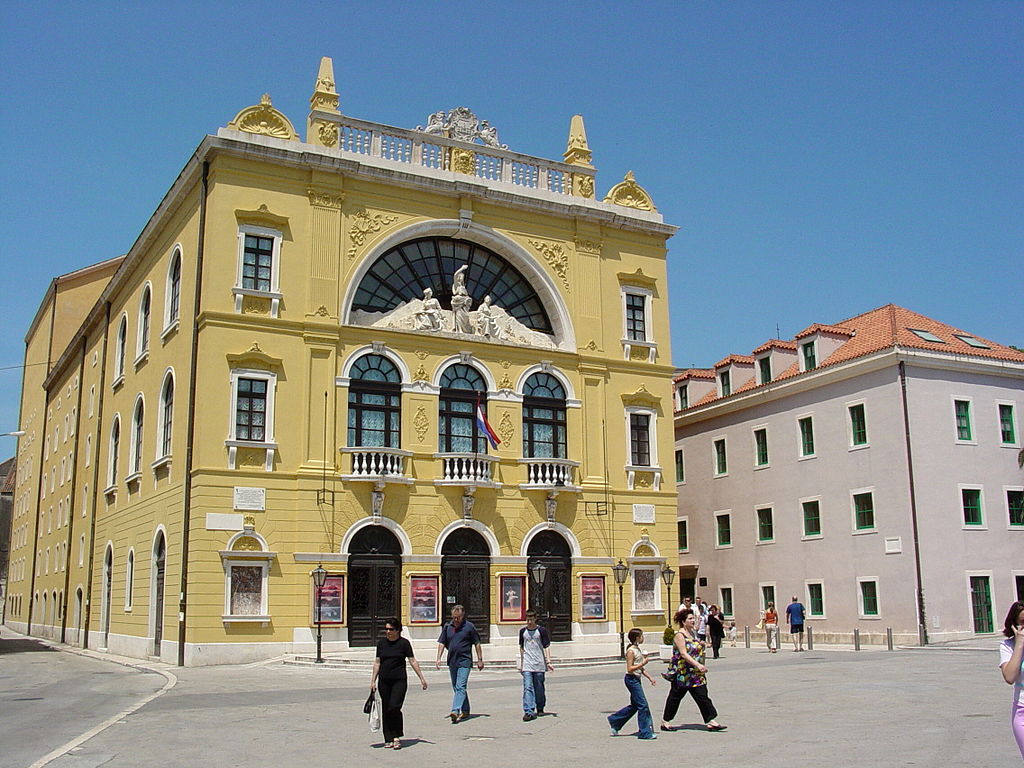
The Croatian National Theater opened in 1893 and was one of the most important performing arts venues in the city of Split at that time. The theater is located within the historic center if Split, not far from the walls of the Palace of Diocletian. It utilizes all of the typical elements found in Baroque Revival Architecture, including Baroque Sculpture, intricate details, and the use of Classical building components.
20. Carlos Lopez Pavilion – Lisbon, Portugal
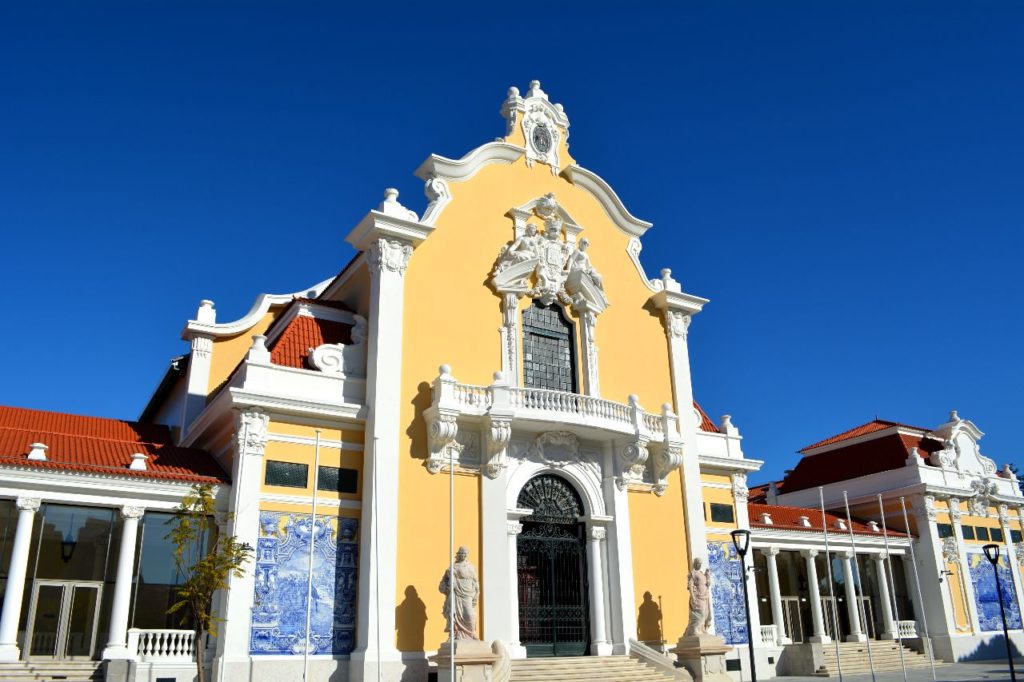
The Carlos Lopes Pavillion is located just outside Lisbon’s historic center and it’s one of the city’s many great examples of Baroque Revival Architecture. It serves as an exhibition space and it hosts an assortment of art, music, and cultural events. The building is famous for its use of Azulejo Tiles, which can be found throughout Portuguese architecture. These porcelain tiles are often blue and white, and they mostly contain geometric patterns of varying shapes. Here the Azulejo Tiles are blended with other baroque design elements like sculpture and intricate details.
Second Empire Architecture & Beaux-Arts Architecture
Baroque Revival Architecture was popular during the late 19th and early 20th centuries. It existed alongside two other building forms with similar characteristics. One of these is the Second Empire Style, which originated in France under the regime of King Napoleon III. In addition to the various examples within Paris, Second Empire Architecture can be found throughout Europe and the United States.
Beaux-Arts Architecture is another style that has a lot of overlap with the Baroque Revival Style. Beaux-Arts Architecture contains lots of Baroque Influence, but it also utilizes new technologies that were available in the post-industrial world.
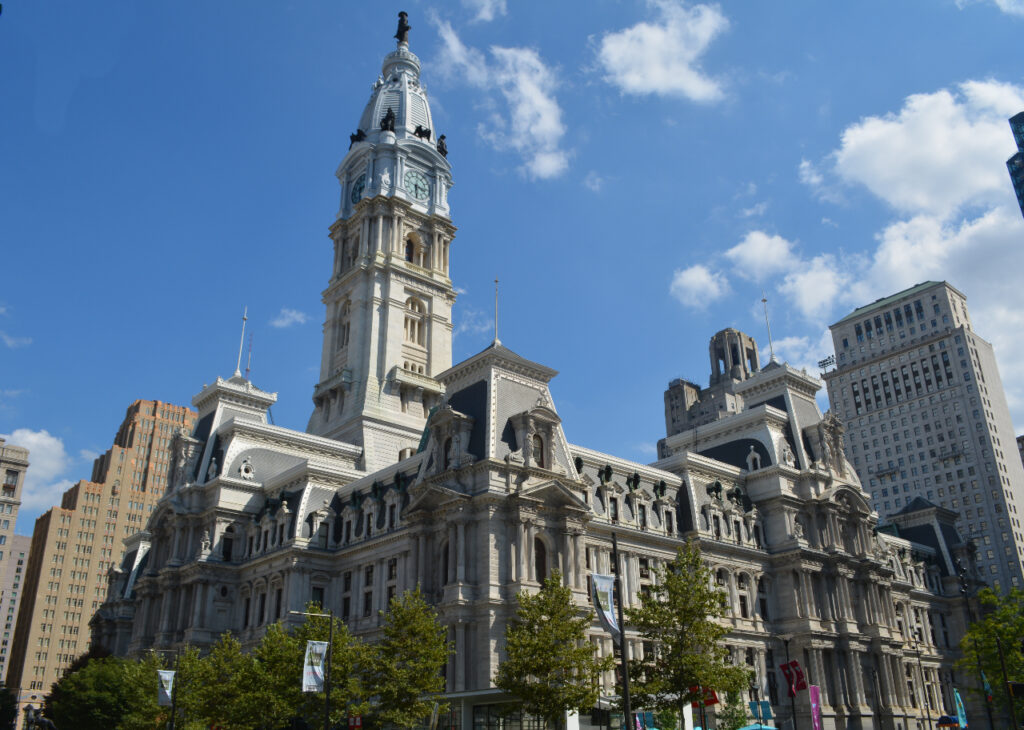
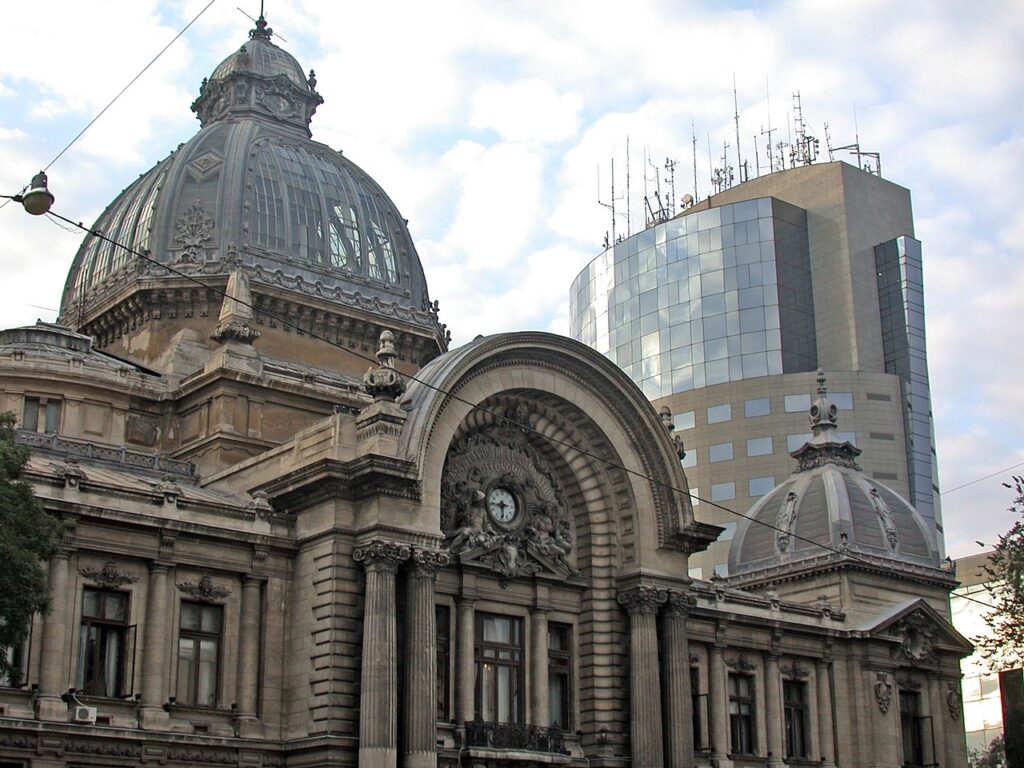
(right) CEC Palace, Bucharest, Romania – Beaux-Arts Architecture
Baroque Revival Architecture Today
Today, there are many great examples of Baroque Revival Architecture located throughout the world. Neo Baroque was one of the major styles within the Revival Movement, and many powerful nations such as the United Kingdom utilized Baroque Revival Architecture as a way to show off their strength and prestige. The buildings listed above all embody the spirit and exuberance of the Baroque Age, each containing the key elements found in the Neo-Baroque Style.
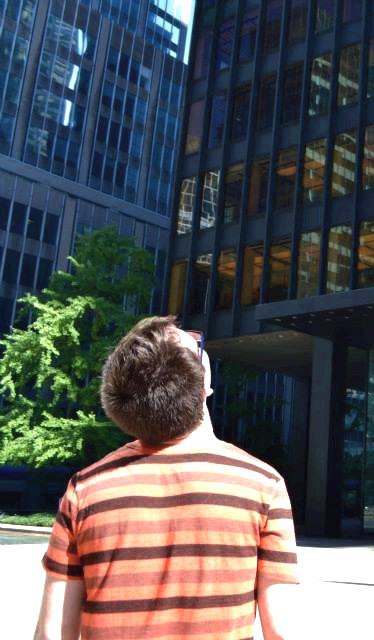
- About the Author
- Rob Carney, the founder and lead writer for Architecture of Cities has been studying the history of architecture for over 15 years.
- He is an avid traveler and photographer, and he is passionate about buildings and building history.
- Rob has a B.S. and a Master’s degree in Architecture and has worked as an architect and engineer in the Boston area for 10 years.
Like Architecture of Cities? Sign up for our mailing list to get updates on our latest articles and other information related to Architectural History.

